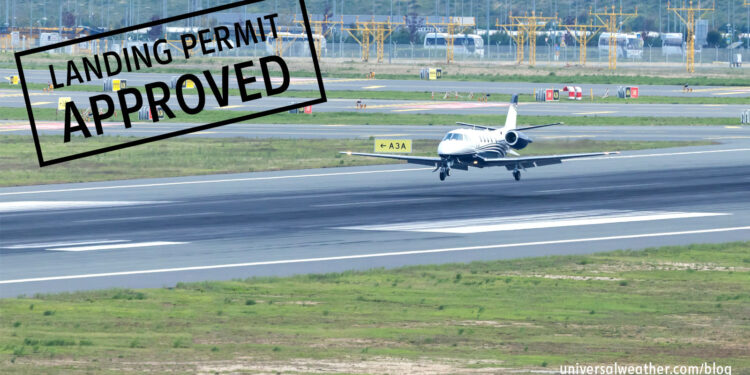The Definitive Guide to Requesting Flight Permits, Part 2

This business aviation blog post is part two in a two-part series on requesting flight permits.
In part one of this series, we provided seven important things you should know about requesting flight permits. Continuing from that article, here are seven more guidelines we recommend you follow:
1. Check with CAA for changes in flight permit requirements
When countries change their flight permit requirements, they will usually announce it, but the method used to do this varies by Civil Aviation Authority (CAA). For example, CAA may communicate the change via AIP, website, etc. As a best practice, we recommend you proactively contact the appropriate CAA periodically and/or well-before a planned trip in order to make sure your permit requirement records are up to date. Also, there may be times when you will not find out about new permit requirements until after your permit request has been sent out, as there may be changes that the appropriate CAA hasn’t announced yet but are in effect for all requests received.
2. Figure out which agencies are involved in the flight-permit process
Usually you will only have to communicate with the appropriate CAA directly. They, in turn, may coordinate with Air Traffic Control (ATC), customs, and immigration as needed. In the case of operations to military airfields in countries such as the U.K. or India, permit approval will be at the discretion of military authorities, and they’re strict on lead time requirements and verification of crew and passenger information.
3. Research flight permit lead times in advance
Provide sufficient lead time for permit requests as additional documentation may be required. India, for example, requires 3 days’ notice for an overflight permit or a technical fuel stop, 7 days’ notice for landing at a civilian airport, and 30 days’ notice when operating to a military base.
4. For short-notice flight permits, have a “Plan B”
Some countries’ CAAs are more willing and/or able than others to approve short-notice permits — those permits requested within a window shorter than the official lead time. In many countries, a short-notice overflight or landing permit can often be secured, but this is at CAA’s discretion. For other countries, including China and India, it may be best to avoid overflight altogether if you cannot give sufficient notice. Remember that a flight permit may be denied if an operator fails to provide sufficient lead time, and having a flight permit denied by just one country can result in downstream delays that negatively affect your passengers. Always consider alternate routes (a Plan “B”) in case a short-notice permit request is not approved.
5. Understand what changes will require a revision to your flight permit and what the impact will be
It’s best to avoid making revisions after a permit has been approved, if possible, as it may also create delays for your operation. Unfortunately, revisions can’t always be avoided. Flight permit revisions may be required if you change your departure point, destination, registration number and/or call sign, crew and passenger information, routing, entry and exit FIRs, or add/remove legs. Depending on the country, flight permit revisions can be very difficult, and may be subject to the same lead-time requirements as filing for a new flight permit.
6. Know your validity period
Each country is different, but flight permit validity times are typically 72, 48, or 24 hours. Many countries in Africa will allow a 72-hour delay, while other countries will not provide a window at all. Some countries (including Israel and Russia) will not allow earlier than approved arrivals. It’s generally easier to extend a permit than to operate earlier than permitted on the confirmation.
7. Other general tips
Operators should become familiar with permit lead time requirements for countries they’ll most likely be dealing with. If you’re arranging permits on your own, it’s important to carefully research requirements for each country prior to submitting permit requests. Many CAAs will not consider a request unless you provide all the information they want with the initial request. It’s best to call once a permit request has been submitted to confirm that it was received. Also, check to ensure that there are no outstanding navigation fees owed for your aircraft.
Conclusion
Once overflight and landing permits have been secured, it’s important to be somewhat cautious in terms of revisions, particularly with countries such as China and India. Permit revisions may not always be straightforward. In some cases, such as flying between China and Western Europe, a schedule change can create permit revisions for all subsequent countries for that flight, which may jeopardize your schedule and operating flexibility. When planning permits on your own without a 3rd-party provider, caution is advised as permits may be rejected if all required documentation is not provided.
Questions?
If you have any questions about this article, contact me at jimemerson@univ-wea.com.




